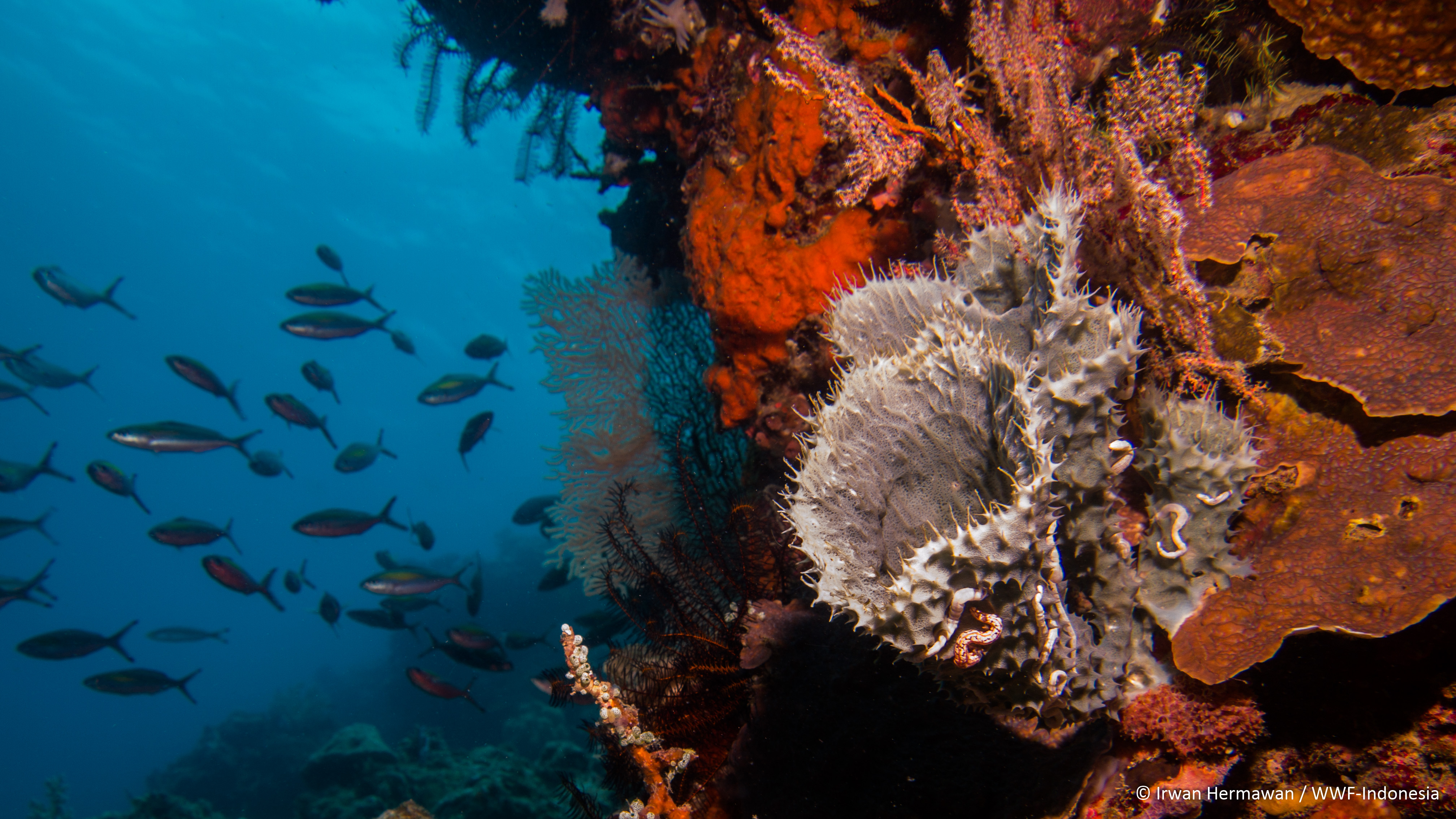DAY 8 : COLDNESS FROM THE DEEP – UPWELLING AROUND THE ALOR ISLANDS
The waters around the Islands west of Alor that we sampled, especially Pantar, Kangge, Rusa, and Kambing, all has two things in common: their surface currents were strong, and their temperature were frigid! One might wonder, how on earth does the water around these tropical islands, in the middle of the day, with no cloud and the sun shining, can be so cold?
To answer this, consider sea water in general as layers, water closer to the surface will be warm, as it is heated up by the sun and becomes less dense. While deeper water, away from the warmth of the sun will be cold and denser than the surface water. This creates different layers of water, keeping the warmer water closer to the surface, “floating” above the colder and denser water down below. The layers are separated by a boundary known as the “thermocline”. Divers would often encounter these boundaries as they dive, moving from the warm surface water to the cold bottom water, indicated as the water suddenly becomes “hazy” due to light refraction caused by the difference in water density.
However, in many places, you have events where the colder water rises up to the surface. Strong winds and surface currents may push away the warmer surface water layer, and in turn, the colder water from below will go up to fill the void. This phenomenon is called “upwelling”, and this is likely to be the reason why the surface water around the Alor islands can be frigid!
There is also another effect of upwelling that we observed. In general, the top warmer sea water layer is often poor in nutrient, as phytoplankton uses up these nutrients to photosynthesize under the sun. On the other hand, the bottom layer are often rich in nutrient, which is unused by plankton, since as you go deeper, availability of sunlight for photosynthesis also decreases. However, in upwelling events, the nutrient from down below will be pushed up and carried towards the surface, allowing phytoplankton to bloom in locations where upwelling occurs. This in turn feeds into the local marine food web, attracting more zooplanktons and filter feeding fishes, which then attract the predators. This probably explains why we saw a large number of predators, including barracudas, sharks, and dolphins in the area. This is also probably the reason why these waters are famous for its tuna fisheries and marine mammal sightings... Because these waters are their feeding ground!





